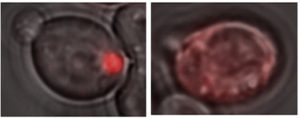Kidney transplants stand as a beacon of hope for individuals grappling with end-stage renal disease (ESRD) or severe kidney dysfunction. The recipients of kidney transplants are a diverse group united by a common thread – the dire need for a new lease on life. Let’s delve into who these recipients are and the transformative impact kidney transplants have on their lives.
End-Stage Renal Disease (ESRD) Patients:
According to experts like The Kidney Docs, the primary recipients of kidney transplants are individuals battling ESRD, a condition where the kidneys’ function is significantly impaired, often to the point of complete failure. ESRD can result from various underlying causes, including chronic kidney disease, diabetes, hypertension, or genetic disorders. For these patients, a kidney transplant offers the promise of restored health and a chance to break free from the shackles of regular dialysis treatments.
Those Facing Severe Kidney Dysfunction:
Beyond ESRD, individuals experiencing severe kidney dysfunction that severely impacts their quality of life may also be candidates for kidney transplants. While not every case reaches the stage of complete renal failure, a transplant can provide relief from symptoms, enhance overall well-being, and prevent the progression of kidney disease.
Living Donor Recipients:
Some kidney transplant recipients are fortunate to have a living donor willing to share the gift of life. Living donor transplants often occur between family members, close friends, or altruistic individuals who choose to donate a kidney to someone in need. This option not only expedites the transplantation process but also contributes to better outcomes for the recipient.
Children and Adolescents:
Pediatric patients facing kidney-related challenges, whether due to congenital conditions or acquired diseases, may also be candidates for kidney transplants. For these young recipients, a successful transplant can mean the chance to lead a more normal, a
Kidney transplants stand as a beacon of hope for individuals grappling with end-stage renal disease (ESRD) or severe kidney dysfunction. The recipients of kidney transplants are a diverse group united by a common thread – the dire need for a new lease on life. Let’s delve into who these recipients are and the transformative impact kidney transplants have on their lives.
End-Stage Renal Disease (ESRD) Patients:
The primary recipients of kidney transplants are individuals battling ESRD, a condition where the kidneys’ function is significantly impaired, often to the point of complete failure. ESRD can result from various underlying causes, including chronic kidney disease, diabetes, hypertension, or genetic disorders. For these patients, a kidney transplant offers the promise of restored health and a chance to break free from the shackles of regular dialysis treatments.
Those Facing Severe Kidney Dysfunction:
Beyond ESRD, individuals experiencing severe kidney dysfunction that severely impacts their quality of life may also be candidates for kidney transplants. While not every case reaches the stage of complete renal failure, a transplant can provide relief from symptoms, enhance overall well-being, and prevent the progression of kidney disease.
Living Donor Recipients:
Some kidney transplant recipients are fortunate to have a living donor willing to share the gift of life. Living donor transplants often occur between family members, close friends, or altruistic individuals who choose to donate a kidney to someone in need. This option not only expedites the transplantation process but also contributes to better outcomes for the recipient.
Children and Adolescents:
Pediatric patients facing kidney-related challenges, whether due to congenital conditions or acquired diseases, may also be candidates for kidney transplants. For these young recipients, a successful transplant can mean the chance to lead a more normal, active, and healthy childhood.
ctive, and healthy childhood.










